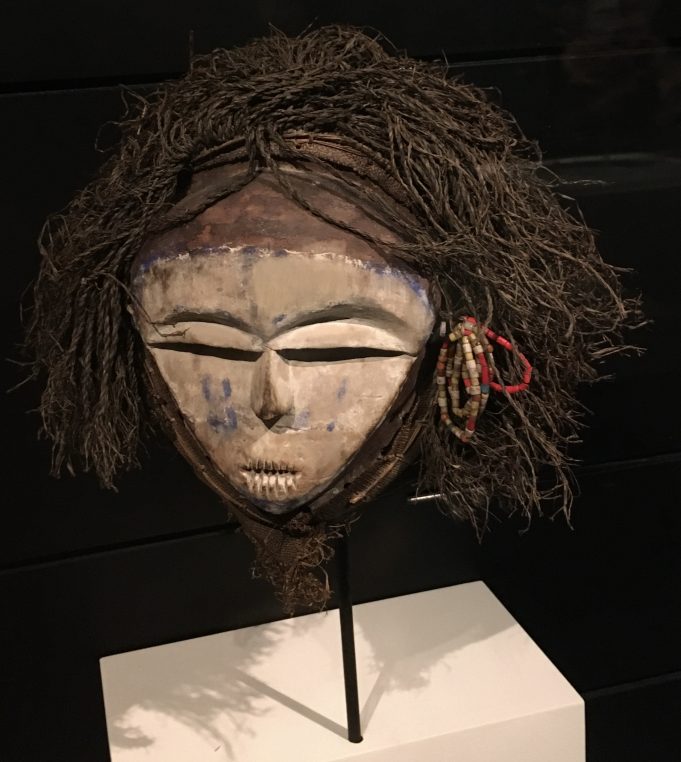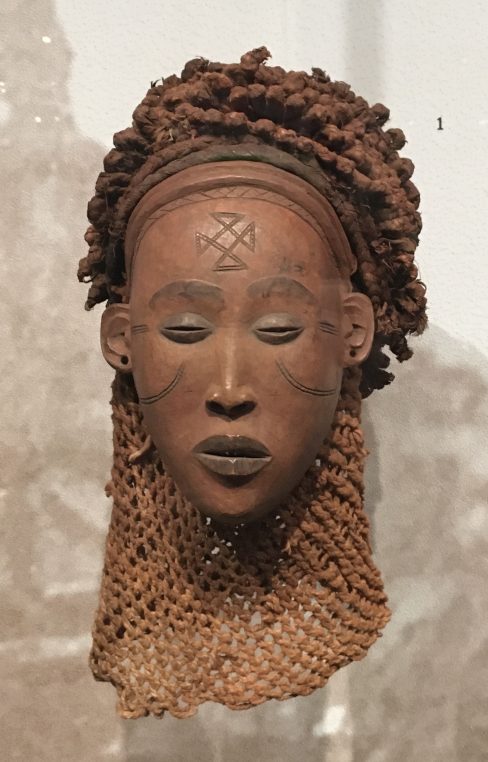
Pwo Mask, Tshokwe, collected y G. Le Paige, jesuit missionary before 1948, musée Royal de l’Afrique centrale Tervuren
The African Museum of Tervuren in Brussels has a remarkable collection of Congo art due to the long colonisation of the country by Belgium and we are lucky at the moment to have 160 works rarely shown before, exhibited at Musée du quai Branly Jacques Chirac and curated by Julien Volper. “La part de l’Ombre” (Out of the Shadows) includes statues, masks and everyday objects from Southwest Congo made between 1875 and 1950 in the land of twelve different people with 28 million inhabitants, where Kinshasa is located. Masks were used by sculptors to compete artistically and were worn only by men for dances and ceremonies. A section is devoted to the mukanda initiation rite of young boys entering adulthood.
Kambada is a woman devoted to the chef who is a seducer and dances sensuously covered with beauty accessories. The Pwo mask represents a feminine ancestor and is used during mukanda initiations. It is there to protect the child who is undergoing the transition to manhood and has spent months in isolation in the bush, receiving teachings on the subject of sexuality, myths, customs, laws and hunting. It is always worn by a male dancer dressed as a woman, who pays the sculptor who often used one of the pretty faces of the village as a model. There are other masks pakasa with blue dye which represent a spirit who devours cows.
A few short films describe how these masks are worn. Then follows a section with anthropomorphic sculptures, some of them in pairs, one male, one female stuck together wich had special powers during the religious rites or healing powers. There is an interesting articulated arm, the galukoshi, used by the diviner for his consultations. And a wonderful Pindi Statue made with a a branch of tree, her arms raised to the sky.
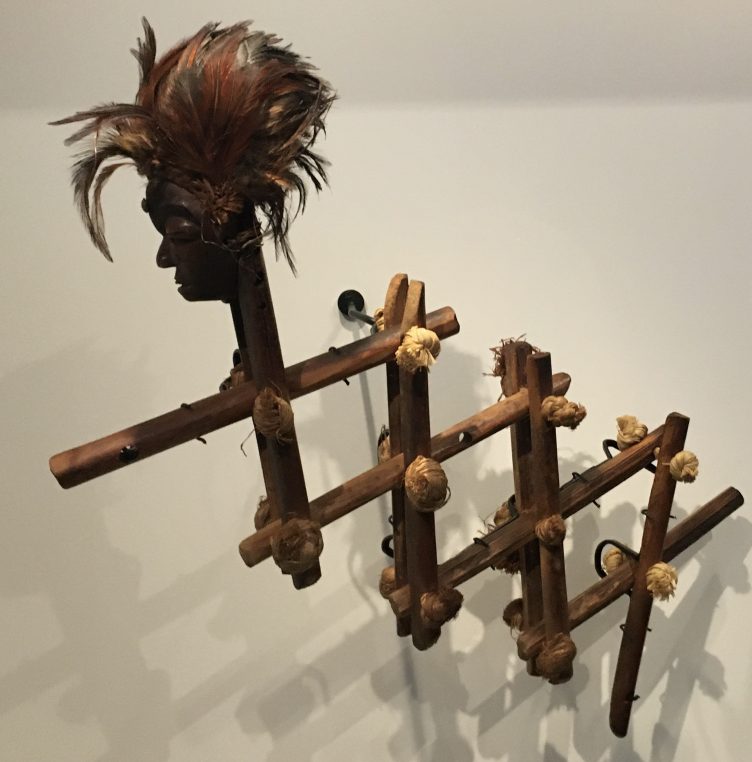
Galukoshi, Pende, an articulated arm used by diviners, 1950, Musée royal de l’Afrique Centrale, Tervuren
One of the precious sources of knowledge comes from Father Leon De Beir, 1903-1983, a Jesuit who studied the Yaka religion and society. He collected one hundred objects for the museum. Loma Gwete (1940-2004), a Congolese art historian trained in Kinshasa and in Leuven, Belgium, studied Social Sciences and the relationship between art and power. Both have contributed to the understanding of the collection. Julien Volper put together the sum of informations with his team at Tervuren who lent the whole exhibition. It is an amazing collection and if, like me, you know nothing about Congolese art, you will still enjoy the esthetics of the pieces.
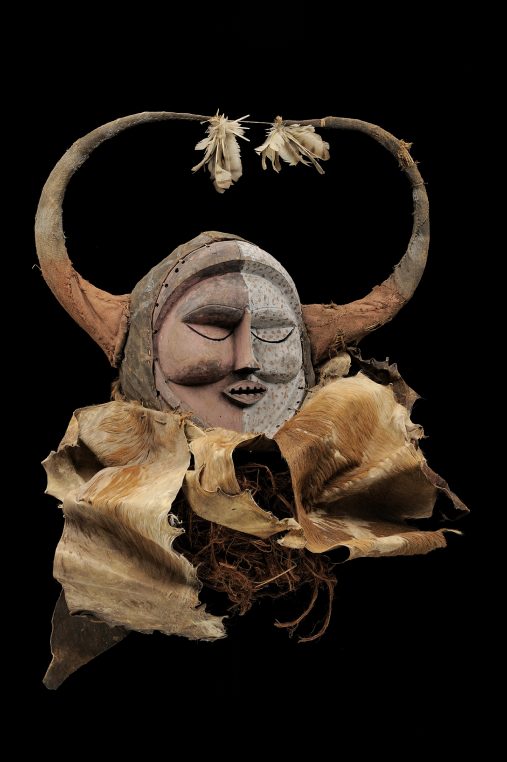
Mbala mask, collected 1939 by F.Pierre, Musée royal de l’Afrique centrale, © musée du quai Branly – Jacques Chirac, photo J.M. Vandyck
Like this Mbala mask made of wood, vegetal fibers, feathers, skin, fabric and pigment which looks like an impish Carnival character. Or with the saber in wood with an iron blade sculpted i the shape of snake with a man’s head which is a sign of political power. There are also ivory jewelry and miniature masks.
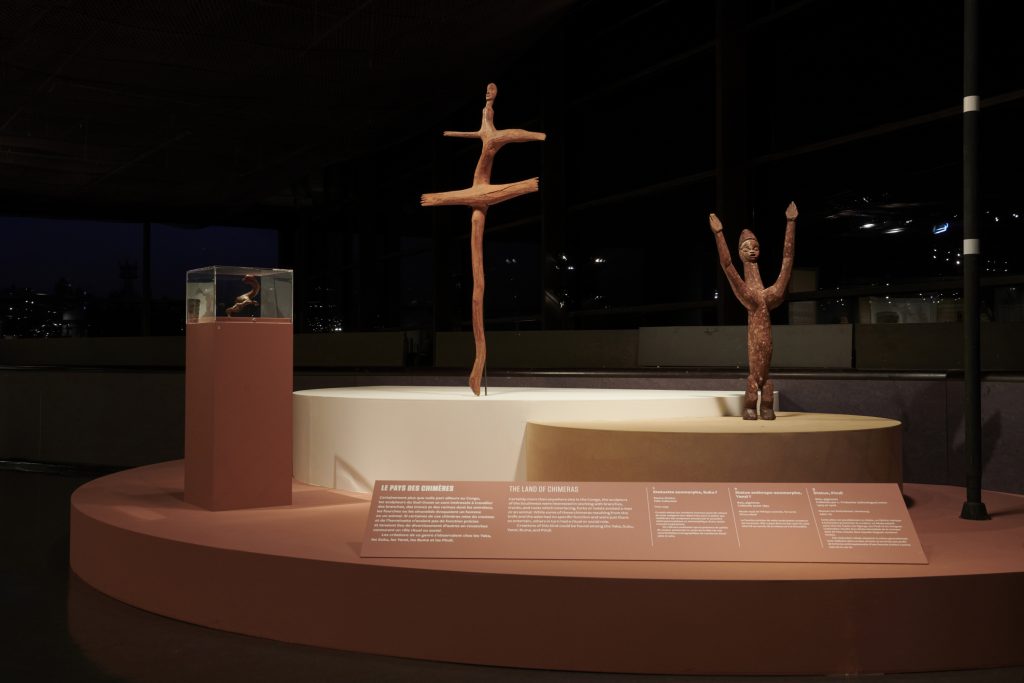
This Yanzi? anthropomorphic statue is linked to hunting and fecundity and (right) Pindi statue, museum am Rothenbaum, Hamburg, photo © musée du quai Branly – Jacques Chirac, photo Léo Delafontaine
The show “La part de l’ombre” is on until April 10 at Musée du quai Branly Jacques Chirac. On April 5, an exhibition of Cameroun’s tribe chefs starts with 300 works of which most are still kept in the chef’s families.
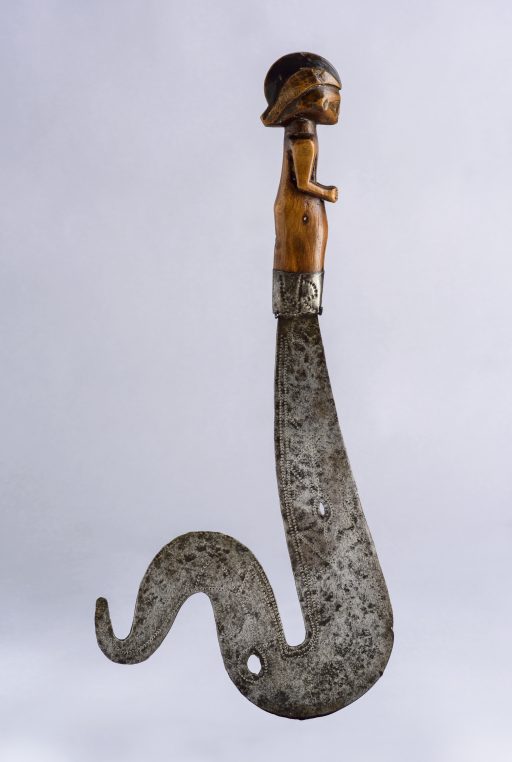
Ceremony sabre Mbala or Kwese, private collection USA © musée du quai Branly – Jacques Chirac, photo James Quine
Share this Post
